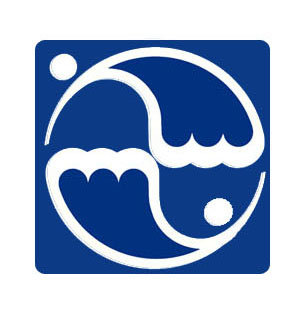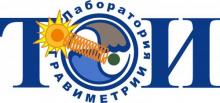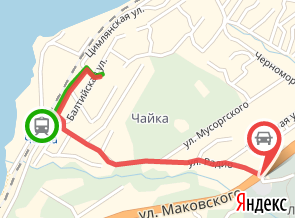The laboratory was founded in 1979.
Dr.Sc., Honored Scientist Ruslan Grigoryevich Kulinich, the founder of the laboratory, had headed it until 2014. In October 9, 2014, Ph.D. Maxim Georgievich Valitov became the head of the laboratory.
Since the laboratory establishment (1979), the main sources of primary information in the field of gravimetry were marine gravity force measurements using a set of on-board gravimeters. A large database was created (information about the gravitational field of all marginal seas and individual regions of the Pacific Ocean). Currently, marine expeditionary research is focused on the Sea of Japan, the Sea of Okhotsk and Kuril part of the Pacific Ocean.
The data obtained in previous years is currently being interpreted. The main method of interpretation is gravitational modeling of the earth crust developed in the laboratory. The obtained results correspond to the current level of such modeling allowing to continue this type of analysis with the expansion of the general set of methods for interpreting geophysical fields.
The Laboratory also studies the effect of the mantle gravity and density inhomogeneity on its stress-deformation state as one of the possible sources of seismotectonic and tectonomagmatic processes in the Far Eastern region using the method of mechanical and mathematical modeling.
The research of tidal and non-tidal gravity force variations sources in the "continent – ocean" border zone is expected to clarify the effect of geodynamics and hydrodynamics in the Sea of Japan basin on the tidal variations of the gravitational field, to determine elastic-viscous characteristics of geospheres, to study possible correlation of gravity variations with other geophysical fields and seismic processes in the Sea of Japan.
These studies are being carried out in stationary monitoring mode at the Schultz Cape marine experimental station together with scientists from the Institute of Automation and Electrometry and the Institute of Petroleum Geology and Geophysics, Siberian Branch of Russian Academy of Sciences (Novosibirsk).
Physical properties of rocks and their complexes as a basis for determining the geological sources of geophysical anomalies are studied.
The physical properties of land and submarine rocks and sediments are being studied to identify their genetic relationship and assess useful mineralization in the Sea of Japan region. For this purpose, collection of seafloor rocks and sediments raised in previous expeditions, as well as new rock samples selected in the Primorye coastal zone, are being used.
It is planned to create a petrophysical Atlas of the North of the Sea of Japan as a basis for the geological interpretation of the results of geophysical research in this region.
The basic scientific research programs of the State Academies of Sciences for 2013-2020. Section №128 «Physical fields, internal structure of the Earth and deep geodynamic processes».
- Spatial and temporal changes in geophysical fields, their relation with structure, geodynamics, seismic and tectonic processes in the lithosphere of Russian Far Eastern Seas and in their framing» (State registration number АААА-А17-117030110032-3). 0271-2018-0004.
- On the basis of expeditionary research, a database on the gravitational field for the marginal seas of the Pacific Ocean was created. The gravitational field of the NW of the Sea of Japan was first studied in detail and maps of gravitational anomalies were developed.
- For the first time, based on gravimetric, altimetric and seismic data, a summary map of the Earth crust power (Central Basin of the Sea of Japan and the southern Sikhote-Alin) was developed. With use of this data, the existence and location of deep earth crust transformational zone (area between the continent and the basin of the Sea of Japan) were established.
- Structure-density models of the earth crust for the border zone between South Sikhote-Alin and the basin of the Sea of Japan were developed.
- Based on the aggregate gravimetric, altimetric and seismic data, the thickness of the Earth crust was calculated and the topography of its base (the Moho border) under the Sea of Japan identified. With use of this basis, the oceanic crust area and continental crust zones with varying degrees of destruction were clarified.
- Based on the aggregate gravimetric, magnetometric and seismic data for the central part of the oceanic slope of the Kuril Island Arc, a cross riftogenic destruction zone, superimposed on the previously formed morphostructures, was revealed in the area of "seismic gap".
- Within the destruction zone, the correlation between the strongest earthquakes epicenters (2006-2007) and subsequent seismic processes with geophysical fields and block fragmentation of the Earth crust was investigated. It was established that the sources of crust earthquakes are usually confined to the tectonic boundaries of the blocks, and most of the earthquakes of this period occurred within the allocated destructive zone.
- Gravity variations of the "continent - basin of the Sea of Japan" border zone were first recorded, and the main parameters of lunar-solar tides in the area were calculated (Schulz Cape marine experimental station).
- The first map of magnetic properties of geological complexes for the north of the Sea of Japan was developed.
- Харченко Т.А., Валитов М.Г. Петрофизические характеристики разновозрастных интрузивных комплексов п-ова Гамова (Юго-Западное Приморье) // Тихоокеанская геология. 2018. Т. 37. № 3. С. 98–108.
- Прошкина З.Н., Кулинич Р.Г., Валитов М.Г. Структура, вещественный состав и глубинное строение океанского склона Центральных Курил: новые детали // Тихоокеанская геология. 2017. Т. 36. № 6. С. 58–69.
- Гаврилов А.А. Морфотектоника окраинно-континентальных орогенных областей: (юг Дальнего Востока России и прилегающие территории). Владивосток: ИПХЦ ТИГ ДВО РАН, 2017. 312 с.
- Валитов М.Г., Прокудин В.Г., Цовбун Н.М. Природа аномального магнитного поля залива Петра Великого (Японское море) // Вестник ДВО РАН. 2015. Т. 2. № 180. С.49–59.
- Прошкина З.Н., Валитов М.Г., Кулинич Р.Г., Колпащикова Т.Н. Изучение приливных вариаций силы тяжести в зоне перехода от континента к японскому морю // Вестник КРАУНЦ. Науки о земле. 2015. № 3. Вып. 27. С. 71–79.
- Валитов М.Г., Кононец С.Н., Кулинич Р.Г. Структурно-плотностные модели земной коры зоны сочленения Центральной котловины с прилегающим континентом // Дальневосточные моря России: в 4-х кн. М.: Наука, 2007. Кн. 3: Геологические и геофизические исследования. С. 347–352.
- Кулинич Р.Г., Заболотников А.А., Марков Ю.Д. и др. Кайнозойская эволюция земной коры и тектогенез Юго-Восточной Азии. М.: Наука, 1989. 256 с.
- Кулинич Р.Г. Особенности глубинного строения и эндогенная рудоносность мезозоид южной части Сихотэ-Алиня // Мезозойский тектогенез. Магадан, 1971. С. 284–289.
- Maksim G. Valitov, Ph.D., head of laboratory
- Ruslan G. Kulinich, Dr.Sc., principal researcher
- Alexander A. Gavrilov, Ph.D., leading researcher
- Elena B. Osipova, Dr.Sc., senior researcher
- Vladimir T. Syedin, Ph.D., senior researcher
- Zoya N. Proshkina, Ph.D., researcher
- Tatyana A. Kharchenko, junior researcher
- Evgeny P. Terekhov, Ph.D., lead engineer
- Tatyana N. Kolpashchikova, lead software engineer
- Svetlana N. Kononets, senior engineer
- Maksim G. Valitov, Ph.D., head of laboratory
- Ruslan G. Kulinich, Dr.Sc., principal researcher
- Alexander A. Gavrilov, Ph.D., leading researcher
- Зимин Пётр Степанович, к.г.-м.н., senior researcher
- Sergey S. Starzhinskiy, senior researcher
- Осипова Елена Борисовна, д.ф.-м.н., senior researcher
- Vladimir T. Syedin, Ph.D., senior researcher
- Zoya N. Proshkina, Ph.D., researcher
- Aleksandr Y. Zhukovin, junior researcher
- Tatyana A. Kharchenko, junior researcher
- Evgeny P. Terekhov, Ph.D., lead engineer
- Колпащикова Татьяна Николаевна, lead software engineer
- Svetlana N. Kononets, senior engineer
- Ilya A. Sigeev, senior engineer
- Grigoriy N. Shkabarnya, И.о.старшего научного сотрудника






